#Hamamelis Virginiana
Explore tagged Tumblr posts
Text

Witch hazel in bloom. 💛
#pennsylvania#plants#october#witch hazel#shrub#woodland#hamamelis virginiana#flowers#fall flowers#witch hazel flowers#plantblr
190 notes
·
View notes
Text




#TOMMY💛🐈 TODAY I SPOTTED THE WITCH-HAZEL IN FULL BLOOM💛🤎
@samirafee
#source: samirafee#own pictures#photographers on tumblr#my cat#tommy#my garden#witch-hazel#hamamelis virginiana#yellow#spring flowers#january 2025
40 notes
·
View notes
Text
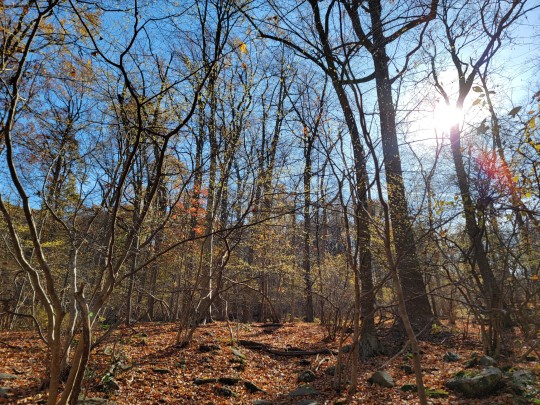
Plant Profile: American Witch Hazel - Hamamelis virginiana
Today's plant is better known for its use as a facial toner but this year I've witnessed a mass-bloom (the yellow dots in the image above) so I want to re-introduce you my ultimate late fall favorite!

Witch-Hazel refers to members of the Hamamelis family, containing about five species, 3 of which are found in the eastern US and the other two in Asia. Our species of focus is the American Witch Hazel, a wide growing, often dominate understory shrub/tree common throughout forests of the American East. The plant has a lovely arching growth habit (Image 2 above), alongside trails in older-growth tall mountain forests, one always can spot witch hazel by a tunnel effect along the trails framed by its branches.


For a quick technical analysis, Witch Hazel has oval alternate leaves that are asymmetrical and have rounded lobes along the sides (image 3 of pressed leaf). The bark is a grey or reddish brown with small lenticels (image 4 of 'trunk') and typically grows in clusters sprouting from deep roots. Typically the plant reaches about 20' in height and 20' in width, as I usually only see specimens this large in very old portions of woodland my assumption is that it takes many decades to achieve this stature.
The flowers themselves are divided into 4 portions with yellow ribbon-like petals present from October-December (image 5, 6, 9). The flowers are extremely fragrant in wet weather and mornings, the scent usually fades in drier conditions. Flowers lose their ribbons and recede into this hardened portion connected to the stem called a calyx (it looks like a rounded pod which can have about 4 seeds in it). The seeds actually shoot out of this pod as a dispersal method around the next fall.
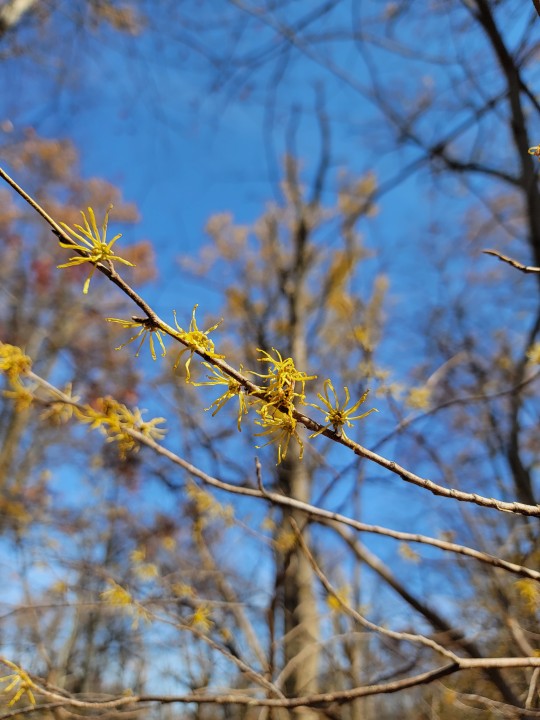

I brought up flowering because like many species in the northeast, there is never a consistent year for these things, while I see witch-hazel flowers every year I don't encounter blooms prolifically unless it's exposed to a lot of sun light. From my experience, a mass-bloom (in which every tree has noticeable blooms like image 1) occurs every 5 years about, I've noticed this in my forest since childhood but others may have more frequent encounters than me.
American Witch Hazel has a large range and is found throughout the Eastern US. The Northern limit of its range is Nova Scotia to Wisconsin staying mostly east of the Mississippi River south until its South Western Limit in East Texas and Northern Florida to the East. Allegedly disjunct populations also exist in Lost Maples Texas and the Eastern Sierra Madres of Mexico but those are fairly isolated from the main range.
There are two other Hamamelis species located within the same range. H. vernalis: Ozark Witch-hazel, which is a common horticultural specimen due to its reddish yellow blooms coming out just before spring and is naturally restricted to the Ozarks. H. ovalis: big leaf witch-hazel is a new species discovered in 2004, found only in one watershed in Mississippi and Alabama; this species has much larger leaves and red mid-winter blooms. Most people are unlikely to encounter these in the wild at all.

Hamamelis virginiana can grow in both acidic and alkaline conditions, though I tend to find the densest populations on protected north facing slopes in mature forests near where water travels. I've also found it on pure rock on mountain top balds in New York before (image 7 above). This is because in the North, American Witch Hazel isn't as limited in habitat as in the Southern portion of it's range where it's generally restricted to only cove forests and bottom lands. generally there is an association with the Witch Hazel and decent moisture.
Speaking of moisture, Early English settlers (shown by Native Americans) used witch hazel branches as dowsing rod to find underground water sources. Sticking branches in the ground, and watching which portion bent upon encountering streams. It's likely the name 'Witch' in Witch Hazel derives either from Middle English 'Wiche' for 'lively' or Anglo-Saxon 'Wych' for 'bend' describing this use. [Info from US Forest Service].

Witch Hazel is also a protector of the forest following disturbance. In a Canadian Journal of Forest Research Study by Taylor Benton, analysis found that where large scale canopy loss was present H. virginiana was found to increase it's basal area growth (think spread) by over 300%. This indicates that in the presence increased light and nitrogen, the dominate understory species are able to protect seedlings by increasing canopy shade!
In my own forest I've noticed this where Ash has died back, the Witch Hazel flowers more prolifically and frequently as well as becoming denser (Image 8 Witch-hazel in flower above a stream)

Now what are the ecological relationships associated with American Witch Hazel? This species specifically provides one of the last insect oriented pollen sources prior to winter (other witch-hazel species often bloom in early spring), so species like the owlet moth which are active in winter, and late season bees get a food source from it. The leaves are occasionally predated by a gall wasp which forms many odd tents on the leaf in favorable conditions.
Propagating Witch-hazel for those crazy like me should be aware it is not an easy plant to start. The seeds require a period of moist cold stratification, then warm, then another cold (think 90 days of fridge, 90 days in warmth, 90 days in fridge) then it'll begin to germinate. If you have a full specimen you can attempt layering (which is covering a low branch in soil allowing it to root). You can take softwood cuttings in spring but they have to be kept frost free the next winter.
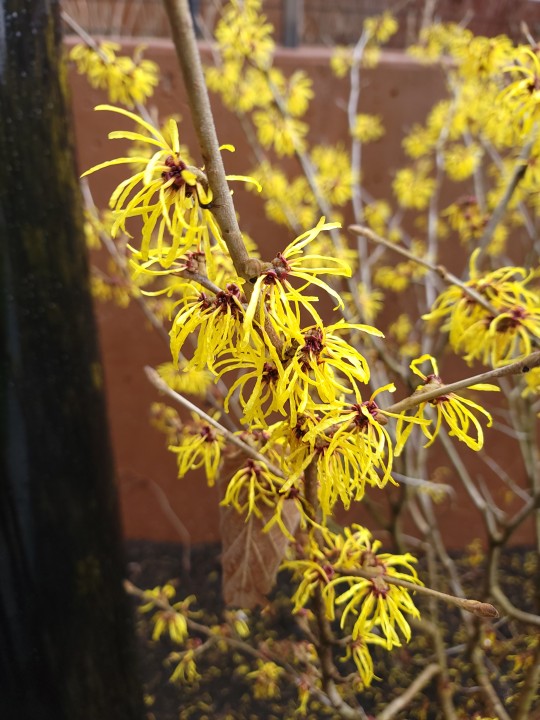
Finally Landscaping advice! Witch-Hazel is best utilized in partially shaded non-south facing or moist areas in partial sun. While it loves total shade in its natural environment it really preforms much better in a garden with some sunlight. American Witch-Hazel also is a better performer in the scent category rather than a showy floral display, most horticultural specimens are derived from hybrids between Chinese, Japanese, or Ozark Witch-hazel (image 10 of possible H. vernalis cultivar above) as their coloring is much more interesting compared to our local powerhouse. However it must be said that American Witch-hazel is resilient and has some flower color variation (oranges and pinks) which are absent in other species.
So this has been my plant profile on American Witch-Hazel, please go into the woods and smell the haunting yellow blooms while the mass-bloom is still occurring. Happy Hunting to my Eastern American followers :)!
#American witch hazel#Hamamelis virginiana#plant profiles#Native Plants of the Eastern United States#Understory Species#Fall and winter flowers
12 notes
·
View notes
Text
Vigoura 1000: The Ultimate Female Vitality Booster
Benifit: Vigoura 1000 Increases Vigour and energy in Female Female Vitality Enhancer that is known as a uterine tonic for women and has a high demand in the market. This Female Vitality Enhancer provided by us brings us repeated enquiries from the clients. Also, we are one of the preferable choices among the manufacturers of Female Vitality Enhancer. Vigoura 1000 Provides real therapeutic…
#ASOKAJ#CHINA OFF PERUVIAN BARK#CIMICIFUGA#COLOCYNTH#CYCLAMEN#FEMALE VIAGRA 1000#FEMALE VIGORA 1000#FEMALE VIGOURA 1000#FEMALE VITALITY ENHANCER#HAMAMELIS VIRGINIANA#PULSTILLA#SECAL COR#VIGOURA 1000 BENEFITS INCREASES VIGOR AND ENERGY IN FEMALE
0 notes
Text



#Hamamelis virginiana#Showing OFF#What a fantastic lil tree#I've never seen one with this much floral coverage#It was in a park so I'm wondering if it's a particular cultivar
0 notes
Text
i imagine a world where people enjoy the beauty and uniqueness of their native plants instead of planting the same Approved plants everywhere one goes ....
#i was reading a blog by someone in new york state who has a woodland garden!#and they wrote of forsythia and how it's beautiful yellow and well loved and widely planted#but witchhazel (hamamelis virginiana) and spicebush (lindera benzoin) both have beautiful yellow flowers and have ecological value!!#because they are native plants vs forsythia being native to eurasia.#v
3 notes
·
View notes
Text

T. Llyle Keith. Wild Flowers of Autumn: Witch Hadel (Hamamelis Virginiana) two flower cluster, 1960- 70.
123 notes
·
View notes
Text

Theseus
Theseus, scarecrow oath of the watchers paladin and shepherd of souls, belongs to @eaudecrow
Flowers
Asphodel (Asphodelus): the land of spirits. In Greek mythology, a field of asphodels in the underworld was the dwelling place of neutral souls.
Dame Violet (Hesperis matronalis): watchfulness
Black bindweed (Dioscorea communis): support
Boxwood (Buxus): Constancy in friendship. Labyrinthine hedge mazes are traditionally made of boxwood shrubs.
Rattlesnake root ( Prenanthes purpurea): protection, shield, guarded steps. This plant was thought to grant protection from being caught up in a group of supposed to “friends” who are in actuality threatening and dangerous.
Heath (Epacris impressa): solitude
Witch hazel (Hamamelis virginiana): a spell is on me.
Straw: constancy. Broken straw: broken contract, trouble.
Corn poppy (Papaver rhoeas): good and evil, light and darkness, life and death, fun-loving, avoidance of problems, oblivion. The ancient Greeks believed that corn would not grow without poppies growing nearby. In Greek and Roman myths, poppies were used as offerings to the dead and in modern times are often a motif found on tombstones. Poppies are some of the first flowers to fill holes in disturbed ground, so old battlefields often fill with poppy.
Giant milkweed (Calotropis procera): purposelessness, a monstrosity
Check out the rest of the Pringles Party!
Yancy | Izen | Phaela | “Red”
#planar Pringles#floriography#dnd character#dnd pc#dnd character portrait#dungeons and dragons#language of flowers#warforged#paladin#You know what I love? Flowers! Symbolic character portraits! D&D!! Furiously committing to ambitious passion projects!#and thus here we are#if I do not post this now I will forget Again#Hay Boy 10 hour version plays (it’s me hitting play every minute)#MOST beloved and important scarecrow OF all time and history. fascinates me#my art#Pringles#Theseus#Theseus Pringles#the tumblrinas get the sparknotes and not the full essay interpretation. unless they ask really niceys and Crow says it’s okay
430 notes
·
View notes
Text
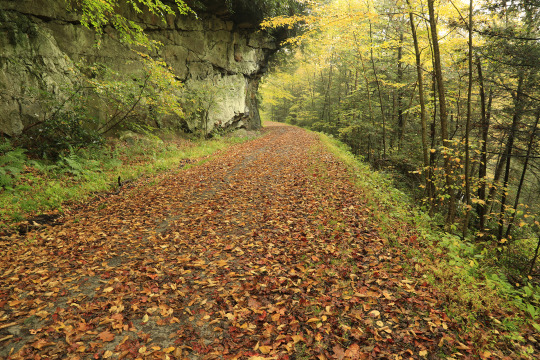

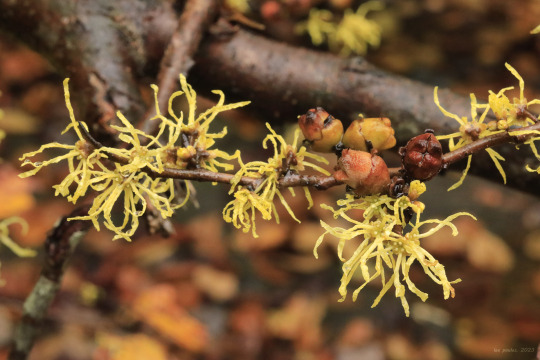
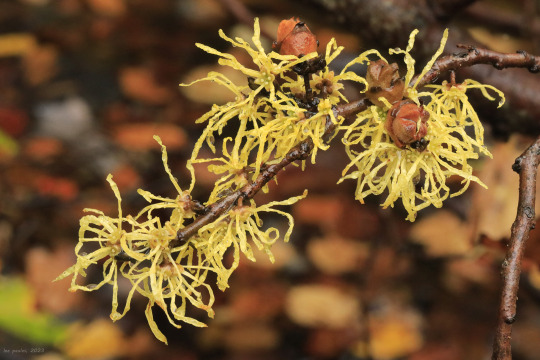


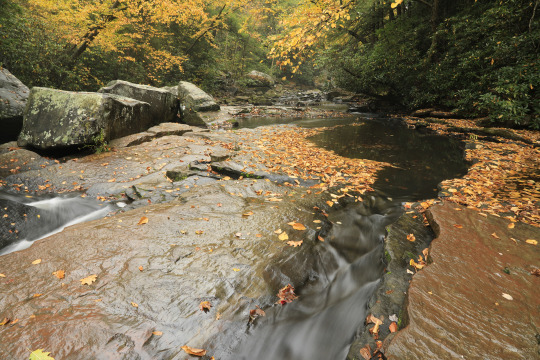
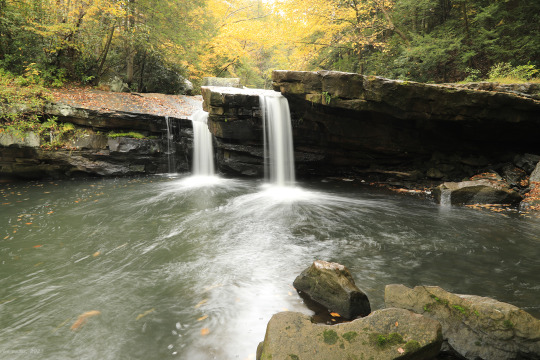
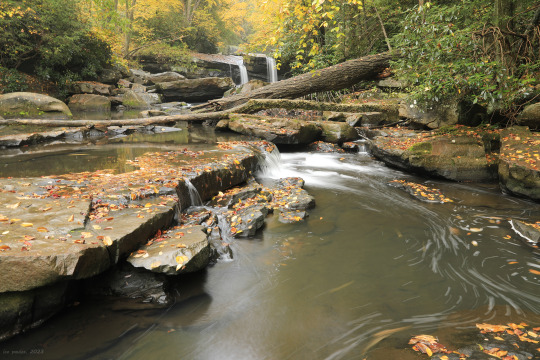
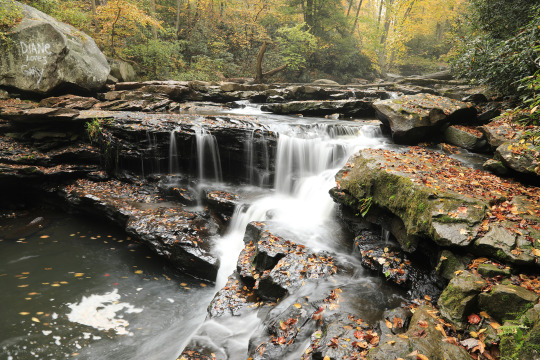
Fall on Deckers Creek in Preston County.
Common witch hazel (Hamamelis virginiana) has started to flower in the local woods. With a growth habit ranging from a droopy shrub to a small tree, it often grows quite densely around here, and its golden, ribbon-like flowers can light up the woods after the leaves have fallen in mid to late October, giving the impression of early spring growth in the middle of fall. Witch hazel has a long history of medicinal use for its anti-inflammatory properties, and its knobby, forked branches have often been used as divining rods.
#appalachia#vandalia#west virginia#flora#fall#deckers creek#deckers creek trail#preston county#falls#leaves
117 notes
·
View notes
Text
✨ Witch Hazel in Skincare: Magic or Myth? ✨

Witch hazel has been a staple in folk medicine for centuries, praised for its anti-inflammatory and astringent properties. But does it really deserve a spot in your skincare routine, or is it just another overhyped ingredient? Let’s break it down.
🌿 What Is Witch Hazel? Distilled from the leaves and bark of the Hamamelis virginiana plant, witch hazel is rich in tannins—compounds that tighten skin and reduce oiliness. It’s been used to soothe irritation, calm redness, and even disinfect wounds for generations.
⚡ The Pros: ✔ Soothes inflammation – Great for acne, razor burn, and bug bites. ✔ Reduces excess oil – A natural toner, especially for oily skin. ✔ Tightens pores – Creates a smoother appearance. ✔ Calms irritation – Can help with eczema and redness when used correctly.
🚨 The Cons: ❌ Can be drying – The tannins + alcohol in some formulas can strip moisture. ❌ Not for everyone – If you have sensitive or very dry skin, it might be too harsh. ❌ Quality varies – Some commercial witch hazel toners are packed with alcohol (up to 14%!), making them more irritating than healing.
💧 How to Use It Safely: 🔹 Look for alcohol-free witch hazel to avoid excessive drying. 🔹 Pair with hydrating ingredients like aloe or glycerin. 🔹 Use as a spot treatment rather than all-over if you’re prone to dryness. 🔹 Always patch test! Your skin barrier will thank you.
💭 Final Verdict: Witch hazel can be a powerful ally when used correctly, but it’s not a one-size-fits-all miracle. If your skin loves it, it can help control oil, soothe irritation, and refresh your complexion. If not? There are plenty of gentler alternatives.
🌙 Do you use witch hazel in your routine?🌿💬
2 notes
·
View notes
Text

witch hazel (Hamamelis virginiana)
4 notes
·
View notes
Text

Witch hazel blossoms right on time.
243 notes
·
View notes
Text
WITCH HAZEL

Witch hazel is native to America and Asia, each having their own unique species. Hamamelis Japonica, Hamamelis Mollis, Hamamelis Ovalis, Hamamelis Vernalis, Hamamelis Virginiana are the 5 officially recognized species of witch hazel with many more considered there own with different characteristics such as non-flowering, petals or none.
Witch hazel contains phytochemicals called polyphenols, this is basically a piece of the plant that helps it fight of bacteria, fungus and other things that may blight it. It also contains tannins (the binding part of the molecular and protein structure), flavonoids, (beneficial metabolites that are separate from the plant but give each other an advantage) and a small percentage of essential oil.
Witch hazel water, is usually combined with alcohol content. It is the distilled water from the leaves, bark and twig pieces of the plant. Swallowing this is not a good idea if you don’t know what your doing as this can cause a number of digestive complaints.
Topical uses
Acne - Because of this plants anti microbial properties, it is very good to improve acne. Used neatly on your face will help reduce redness and inflammation as well as kill acne causing bacteria.
Burns – This plant also has a cooling effect so can be used on hot or swollen ares. When you experience a burn, the skin is effectively breached allowing all kinds of bacteria in potentially causing infection, again, this plant is also antimicrobial in formulas containing at least 90% witch hazel.
After Birthing – Because this causes significant trauma in the area, sometimes stitches are needed, the area is massively stretched and therefore very very sore. Witch hazel is also an effective anti-inflammatory. Because of all the other beneficial effects it can reduce the risk of infection, provide topical relief and cool the area down. For this reason its also good for hemorrhoids.
Magickal uses.
Witch hazel relates to happiness, love, lust, excorsism and baneful magick breaking. To break baneful magick, burn a little in a cauldron (you will likely need more than just this as a strategy). You could also use this to remove negativity from an object. Put some witch hazel herb in your cleansing mix of your choice then place the object in your mix. This can also be put into a tea for love and lust.
To infuse an oil with this, use dry wilted parts of the plant or your oil will go rancid. Oil and water do not mix therefore all trace of moisture must be removed from the plant part you use. You can use this as a combination if you like in your oil but the principle still stands for needing to be dry.
DO NOT SUBSTITUTE THIS FOR ADVICE FROM A DR IF YOUR CONCERNED.
#witch#herbal magick#witch blog#kitchen witch#herbs#kitchen witchery#hearth witch#pagan#green witch#witchcraft#witchy#witch aesthetic#witches#witchy vibes#baby witch#earth witch#cottage witch#hedge witch#kitchen witchcraft#forest witch#nature witch#pagan witch#witch community#lunar witch#witch familiars#witch core#witch history#witchblr#witchcore#witch tips
28 notes
·
View notes
Text



Witch Hazel Blooms - November 1st 2023
#they havent been as prolific as they usually are but this year i actually caught them at the right time#hamamelis virginiana#nature#witch hazel#fall flowers#forest#autumn#understory shrubs
11 notes
·
View notes
Text
My Garden Flowers Part 10
All photos mine, unedited. Not many at present because most of these haven't flowered yet! But they will and I will update. :)



In order of appearance:
271. Cow Parsnip (Heracleum maximum) Not pictured as she hasn't flowered yet.
272. Dutchman's Breeches (Dicentra cucullaria) Came free accidentally with my blue cohosh! I didn't intend to get this because unlike her cousin, squirrel corn, she has no known edible parts, but hey, free native plant that's pretty expensive. I'm not complaining. Not pictured as she hasn't flowered yet.
273. Blue Cohosh (Caulophyllum thalictroides) Not pictured as she hasn't flowered yet.
274. Witch Hazel (Hamamelis virginiana) Not pictured as I haven't got pictures yet.
275. Allegheny Blackberry (Rubus alleghaniensis) She did flower last year but only made one single berry each! Was kind of funny. Sadly there won't be any this year because the landlord cut her! (:
276. Showy Goldenrod (Solidago speciosa) Not pictured as she hasn't flowered yet.
277. Canadian Clearweed (Pilea pumila) She's kind of everywhere now, showed up with my jumpseed. Would likely be regarded as a weed in most places but I think she's cute.
278. Jumpseed (Polygonum virginianum) Not pictured as she hasn't flowered yet.
279. Green Dragon (Arisaema dracontium) Not pictured as I haven't got pictures yet.
280. Hemp Dogbane (Apocynum cannabinum) Not pictured as she hasn't flowered yet.
281. Yellow Avens (Geum aleppicum) Because although the yard is full of yellow-flowering avens, I'm pretty sure those are all bigleaf avens, and I wanted the other one too.
282. Lingonberry (Vaccinium vitis-idaea) Not pictured as she hasn't flowered yet.
283. Joepyeweed (Eupatorium maculatum) Not pictured as she hasn't flowered yet.
284. Alpine Sweetvetch (Hedysarum alpinum) Not pictured as she hasn't flowered yet.
285. Black-Fruited Sedge (Carex eburnea) Not pictured as I haven't gotten any pictures yet.
286. Early Blue Violet (Viola adunca) Not pictured as she hasn't flowered yet.
287. Giant Goldenrod (Solidago gigantea) I didn't plant that, but she's growing in numbers. lol Not pictured as she hasn't flowered yet.
288. Swamp Rose (Rosa palustris) Not pictured as she hasn't flowered yet.
289. Arctic Sweet Coltsfoot (Petasites frigidus) Not pictured as she hasn't flowered yet.
290. Great St. John's Wort (Hypericum ascyron) Not pictured as she hasn't flowered yet.
291. Lake Blackcurrant (Ribes lacustris) Not pictured as I haven't gotten any pictures yet.
292. Sweet Bedstraw (Galium triflorum) Not pictured as she hasn't flowered yet.
293. American Hog Peanut (Amphicarpaea bracteata) Not pictured as she hasn't flowered yet.
294. Arctic Raspberry (Rubus arcticus) Not pictured as I haven't gotten any pictures yet.
#blackswallowtailbutterfly#my photos#photography#my garden#garden flowers#native plant gardening#native flowers of Carolinian Canada and USA
5 notes
·
View notes
Text
Witch hazel (Hamamelis virginiana) blossoms in very late autumn and winter. Extracts of its leaves and bark are rich in tannins* and other skin-stabilising components. Witch hazel has astringent, anti-inflammatory and anti-oxidant properties for skin care. The power of the sun appears to be concentrated in the witch hazel shrub, which absorbs the sun throughout the spring and summer and does not release any of the collected energy until late autumn, when unusually, it simultaneously produces both flowers and matured fruit from the previous year.
You will find our witch hazel leaf/bark extract in the following products: Clarifying Steam Bath, Clarifying Toner, Cleansing Cream, Facial Toner, Melissa Day Cream, Night Serum, Quince Day Cream, Renewing Night Conditioner, Revitalising Day Cream (see below), Sensitive Care Conditioner, Translucent Bronzing Tint, Sage Mint Deodorant and many Make-up products.
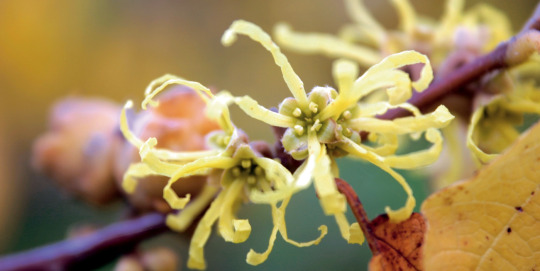
*Tannins
Tannins are polyphenolic compounds widely found in the plant kingdom. The word tannery comes from the tannin in the bark that was used to preserve leather back in the day. It’s believed that tannins provide plants with a defence against predators, bacteria and fungi, and UV. We love botanical ingredients high in tannin for skin care as they are potent antioxidants. Witch hazel is rich in tannins.
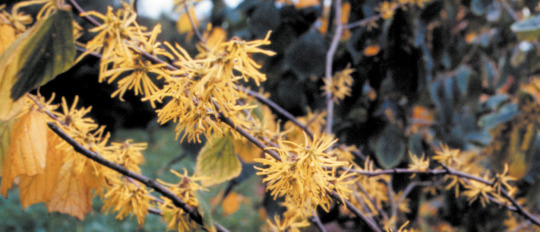
Witch hazel (Hamamelis virginiana)
The origins of 'witch' are from the old English word wyche, meaning 'pliable' or 'bendable' and relates to the plant's very flexible branches, and nothing to do with witchcraft. The flexible forked twigs of witch hazel are preferred as divining rods. Regardless, modern witches do consider witch hazel a magical plant, to ward off evil and to help heal a broken heart. 'Hazel' because the plant's leaves resemble those of a hazelnut tree. 'Hamamelis', means ‘together with fruit’, referring to the simultaneous occurrence of flowers with the maturing fruit from the previous year. 'Virginiana' because it’s native to eastern North America, from Nova Scotia to Florida. The state of Virginia is around the half way point in this area.
Can also be used as a bae oil for cleaner verification or can be used to do healing annointing oil mixed half with coconut oil as well.
#paganblr#witches of tumblr#spellcraft#witchcraft community#pagan wicca#witch stuff#traditional witchcraft#folk magic#book of shadows#eclectic witch#virginia#louisiana#washington#new york#california#england#great britain#new zealand#paris#new orleans#mystic falls#greenbackville
3 notes
·
View notes